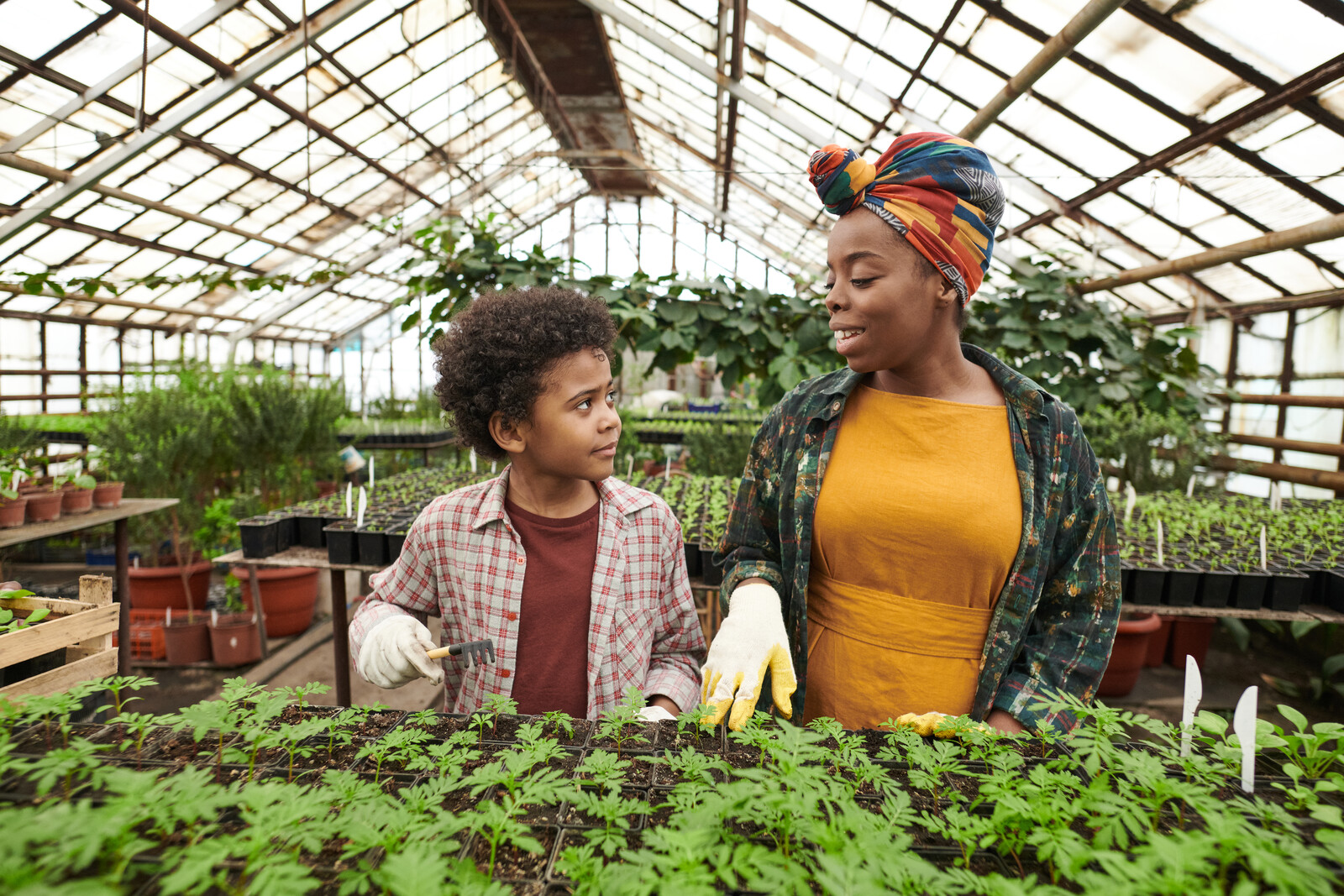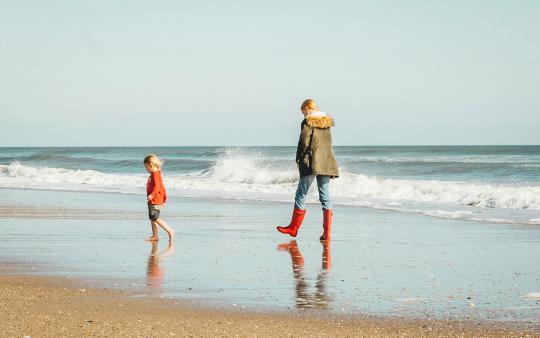The healing power of nature isn’t a new idea. Experts date the idea of nature’s healing powers back thousands of years. It can be found across traditional practices and systems, from Indigenous medicines to Ayurvedic, and TCM. Naturopathic doctors recognize nature’s “inherent self-healing process” and take it as one of their six main principles, referred to as the Vis Medicatrix Naturae.1 And even modern e-medical providers mention ecotherapy, or green or nature therapy, as the idea of being in nature to boost growth, healing, and mental health.2
Green therapy isn’t new, but you can always discover new ways to enjoy this health boost. Even better, many of these ideas allow us to enjoy them with environmental sustainability in mind and a world focus too. Take a look at some amazing ways to explore ecotherapy around the world and discover how to support your own ecotherapy at home.
Friluftsliv
Europe is home to some excellent ideas for ecotherapy. Scandinavians have a concept called friluftsliv (pronounced free-loofts-liv), which loosely translates to open air living,3 and links rather closely with allemansrätten, the right to roam. In essence, the goal is to get outside frequently and, if possible, away from urban chaos. For modern Scandinavians, that may mean a bike ride to work or resting in a mountain hut. In Sweden alone there are 25 non-profit associations anchored to friluftsliv, with 1.7 million memberships spread across 9,000 local and regional clubs.
While this may feel similar to some North American initiatives, the Scandinavian joy in and craving for outdoor spaces is unique. So ingrained is this practice in Norway that frilufsliv has a dedicated page on Norway's official tourism website which adds, “Get out. Get going. Get that happy grin on your face.”4
Another important point common to this northern love of the outdoors is that nature is healing in all different forms of weather as long as you have the right gear.
Dew treading
If you’re a morning person, this is the exercise for you! Known as dew treading or dew walking, all you need to do is simply find a quiet patch of lawn, look down at the glistening dew, and walk through the moisture with bare feet. And as long as you have clean, safe grass available, this ecotherapy is a great family activity. The Netherlands have a family tradition on Ascension Day, the 40th day after Easter, where parents and children venture out into the morning to go dauwtrappen, which involves walking through morning dew and collecting new spring flowers.5
Motivational speaker Steve Guettermann described the experience of dew walking as, “This little-known, but excellent, technique nourishes the body by absorbing micronutrients through the feet when walking barefoot in morning dew or frost. It's also a great way to stay grounded, while being expanded at the same time.”6
While for Guettermann, this may have a spiritual component, this definitely isn't required. Dew walking is part of the 200-year-old Kneipp healing method that focuses on hydrotherapy as a means to “invigorate the immune system…guard against headaches, strengthen the muscles of the foot and reduce stress.” 7
Hot potting
From Icelandic sundlaugs to Arenal volcanoes, people around the world love soaking in natural hot pools. First, a health warning: Not all hot water is meant to be soaked in!8 Just as people claim many health benefits from hot pools, exploring outside guided and curated natural springs can be dangerous with either deceptively hot waters, or in the case of Yellowstone National Park even acid and deadly waters—so don’t “hot pot” in ignorance.
In especially high demand, many people appreciate the added health benefits of volcanic water, such as those found at Arenal Paraiso Hotel in Costa Rica.9 Guests can sit in pools of 11 varying temperatures all in view of the picturesque Arenal volcano. People soaking in these all-natural pools enjoy the skin-and-body-friendly benefits of pH and alkalinity-affecting minerals, including calcium, chloride, sulfate, silicon, iron, sodium, potassium, magnesium, and phosphate.
In Iceland outdoor hot pools called sundlaugs are commonplace,10 and can vary from naturally found to more commercially created, but most are heated geothermally. Despite extensive winter cold and darkness, these pools are used year-round by the population to gather, get outside, and relax in the warm water. In addition to the myriad health benefits from relaxed muscles to improved circulation provided by hot water, Icelanders also describe an increased level of body acceptance as they share these pools.
Shinrin-Yoku
Shinrin-Yoku, the Japanese term meaning forest bathing, or perhaps taking in of the forest atmosphere,involves the art of absorbing ecotherapy through your senses.11 The practitioner isn’t required to do anything at all, but connect with the forest using their sight, hearing, taste, smell, and touch.12 Many think of forest therapy as a form of meditation, but it is also easily a form of aromatherapy. For those who love the smell of pine or petrichor, spending one to two hours immersed in the scents of nature can be calming and therapeutic. Those craving tactile interaction can touch soft moss or rough tree bark.
Embraced by the Japanese, forest bathing is promoted as a method to support mental health, including easing the chronic stress that can contribute to anxiety, depression, and insomnia, as well as alleviating physical symptoms like high blood pressure, muscle tension, and lowered immune response.13 If seeking a forest bath experience in Japan, visitors can connect with the Society of Forest Medicine. Ideal locations include the Japanese Alps and the Kii Peninsula, home to the sacred forests of the Yoshino-Kumano National Park, all of which have guided options available so visitors don’t risk getting lost.
Thalassotherapy
Loosely translated from the Greek, thalassotherapy refers to saltwater therapy,14 and is believed to date back to antiquity, when tired and aching soldiers would heal their wounds in hot saltwater baths. Lourdes Mourelle, an expert in spa wellness and a researcher at the University of Vigo in Spain, explains that this therapy stimulates the endocrine system, among other benefits: “Seawater and thalassotherapy are general body stimulants. They act by increasing the hematopoietic (blood cell production) functions, improving response capacity, and acting as a general tonic. They can also boost the immune system.”
While thalassotherapy typically includes additions like massage, hand and foot soaks, seaweed and mineral additives, there are also many variations including algotherapy, which uses seaweed in muds and wraps, and a type of physiotherapy that involves exercising in seawater.
New Zealand has a location aptly called Hot Water Beach on the Coromandel Peninsula that combines both hot potting and thalassotherapy.15 This ocean beach has sand that sits atop a layer of geothermally heated water which is easily accessible at low tide. Beachgoers will dig their own hot pool to soak in. To adjust water temperature, bathers can dig a small channel to the sea to add some cooling Pacific saltwater!

EVERDAY ECOTHERAPY AT HOME
Need some tips to develop your own everyday ecotherapy routine? As parents, family travel to distant locales can be difficult to organize and incredibly costly. Fortunately, you can find little bits of nature everywhere, including near your home. While nature therapy typically consists of a trained expert, a green environment, and a love of nature,16 you can learn about your local area at your own pace too.
Test out these family activities and find benefits right outside your door:
Use your local trails Run, or take a family bike ride. Most cities have park areas large enough to have safe and maintained trails that you can use for family exercise. If you need help finding these locations, check social media for local running or biking groups to help guide you.
Take a Hike
Hiking with kids is a fantastic way to get outside together. Grab a local guidebook so you can scout trails ahead of time and then create a nature-based scavenger hunt. Identify leaves, flowers, and wildlife along the way.
Life’s a beach
Your thalassotherapy need not be formal. If you live in a coastal location learn to enjoy the beach in all kinds of weather. Explore the sand at low tide or watch the ocean waves crash in during a winter storm. Fly a kite or count the seagulls.
Grow On
Dirt, digging, and growing is highly therapeutic. In addition to creating beauty at your home and some tasty treats, gardening is also a wonderful teaching moment for your children to help them to connect to nature and the food lifecycle, as well as take pride in accomplishment. For many who do not have garden space, there are rentable garden spots in a local pea patch, or you can simply create a doorstep or window container garden.
Adopt an Animal
No need to rush to the local shelter for this one – there are many ways to employ animal stewardship as an excellent ecotherapy. Taking care of family pets is always a wonderful way to connect beyond our modern technology, but we can also gently connect to nature. Discover your backyard birds and find out which types of food each bird will need and when. Set up a camera to capture images to identify each species. Learn about butterflies and which plants will attract and aid them. Explore an anthill and monitor it over time. Follow the actions of the neighborhood crow or squirrel and learn their habits.
Forest Bathe in the City
Many of us can’t access large swathes of nature in our daily routine, but we can easily access small patches. If you can’t get to a forest, try taking a few steps off the beaten path at the park (making sure you watch for signs and don’t disrupt any ecology projects of course). If you can’t find a good park, try your local arboretum or greenhouse. Even if not in an “official” forest, you can still gain many benefits simply by being surrounded by the natural world.
Ecotherapy isn’t just something for experts. Ecotherapies have been practiced by cultures around the world year after year including in our modern times. Data backs up the idea that nature can help us stay healthy and heal, and is a tool highly accessible to most families. While there are exotic ecotherapies around the world we can add to our bucket lists, there are also so many techniques we can try at home. The most important thing is to get outside.
Promoting diversity and inclusion in outdoor spaces
Promoting nature-based therapy and the great outdoors can’t be responsibly addressed without acknowledging the diversity gap in enjoying these therapies in North America. Many marginalized people have been especially affected by a lack of access to nature-based areas, with feelings stemming from “otherness” in these spaces to outright fear of racism and violence. People of colour are also far less likely to live in areas that have direct access to natural areas.
Describing what is referred to as the “nature gap” is Kang Jae “Jerry” Lee, assistant professor in the Department of Parks, Recreation and Tourism Management at NC State, who seeks to address why this gap exists. Lee surmises that “There are a couple of different theoretical explanations that have been provided by different researchers….Socioeconomic status, cultural differences, racial discrimination and the history of institutional racism. In my personal opinion, the most reasonable explanation is the last one, the historical racial discrimination: we are the products of our past.”
One of the organizations seeking to change this situation is #DiversifyOutdoors,17 a coalition of social media influencers that includes bloggers, athletes, activists, and entrepreneurs. Their goal to promote “diversity in outdoor spaces where people of color, LGBTQIA, and other diverse identities have historically been underrepresented, ” and they promote events and article-based content that help connect diverse people with outdoor spaces as well as instill a sense of community that may otherwise be missing.
For further reading visit ecoparent.ca/EXTRAS/SPR22
You May Also Like: Bring Back Outdoor Play to Our Indoor Kids!, Why Children Need Nature for Future Well-Being, 3 Tips to Get Teens Outdoors.






